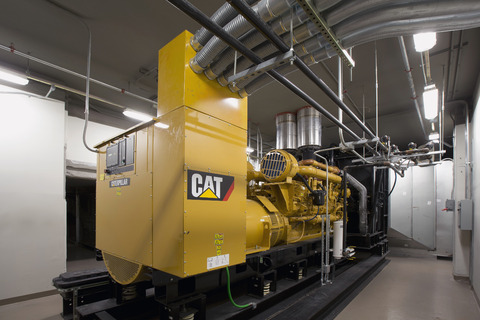Ensuring your diesel-fuelled generators are compliant
13 Feb 2019

Emissions legislation doesn’t spell the end of the diesel-fuelled generator, says Jason Harryman of Finning. Don’t panic, because you can balance your environmental and business obligations...
The Medium Combustion Plant Directive (MCPD) is designed to reduce harmful sulphur dioxide (SO2), nitrogen oxides (NOX) and particulates in exhaust gases from new and existing combustion plant rated between 1 MW and 50 MW thermal input.
Operators of diesel-fuelled generators, one of the key technologies to be affected by the legislation, may be concerned about the long-term impact. Yet by taking an engineering-led approach, operators can continue to benefit from diesel generator plant.
The regulations set NOx limits ranging between 190-205 mg of NOx per Nm3 for power generation equipment up to the 50 MW threshold. Reducing these NOx emissions in a conventional four-stroke engine to the levels required for continuous operation is problematic and both operators and regulators need to be mindful of the engineering limitations.
Manufacturers and suppliers are continuing to engineer solutions for the stand-by market to ensure ongoing compliance
However, on a positive note, the vast majority of diesel generators are commissioned on a standby basis, and therefore will fall below this threshold, with a caveat that operating hours should not exceed 50 hours per annum.
Technology innovations
Diesel engine technology combines very high thermal efficiencies with good fuel efficiency, resulting in low carbon dioxide emissions. However, high temperatures in the combustion chamber, while helping to reduce the production of soot, also increase the levels of nitric oxide (NO), which when released in to the atmosphere, oxides rapidly to create nitrogen dioxide.
The trade-off is typically to lower the temperature in the combustion chamber to reduce the amount of NO produced, but this increases the likelihood of soot formation.
It is this area where suppliers, such as Finning and Caterpillar are making significant engineering advances.
For example, Finning now offers a range of air-to-air after cooled, or charge-air cooled engines from the Cat 3516 range. This technology cools the engine air after it has passed through a turbocharger but before it enters the combustion chamber, effectively returning the air to a lower temperature for optimum power.
Keep it clean
Another area that operators may want to consider is the introduction of selective catalytic reduction (SCR).
SCR uses a urea-based diesel exhaust fluid (DEF) and a catalytic converter to reduce harmful NOx emissions. DEF is injected into the exhaust air stream where the energy contained in hot exhaust gas causes the NOx to evaporate into ammonia. Once the ammonia and exhaust gas reach the SCR catalyst it decomposes, breaking down into nitrogen gas and water vapour.
In conclusion, engine manufacturers and suppliers are continuing to engineer solutions for the stand-by market to ensure ongoing compliance below the 50 MW threshold, including advances in gas-fuelled technologies to enable faster start-up and to extend the technology to back-up or emergency applications.
Exploring the latest options to enable cleaning burning can pay dividends, giving operators greater assurance that diesel generators can continue to offer an efficient and compliant solution for stand-by installations.
Jason Harryman is sales and business development manager, Electric Power-Diesel at Finning (UK) Ltd.

